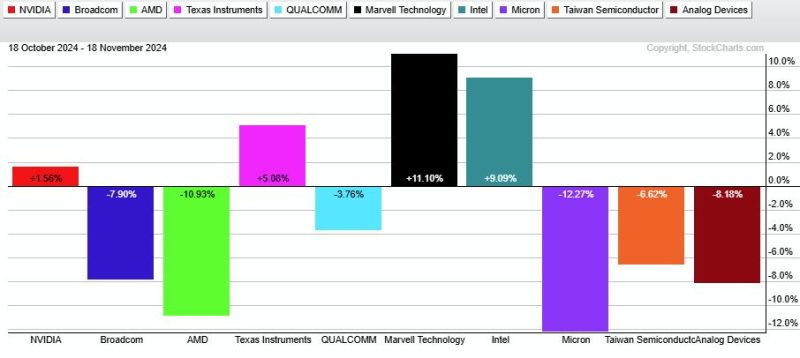
Cracking the Code: Exploring Why SMH Outshines SOXX in the Semiconductor ETF World
In the world of exchange-traded funds (ETFs), semiconductor-focused funds have been gaining traction as investors look to capitalize on the growing demand for chips in various industries. Two popular semiconductor ETFs, SMH and SOXX, have been closely watched by investors due to their performance amid volatile market conditions. In this article, we will delve into the reasons why SMH has been holding up better than SOXX in recent times.
**1. Diversification**
One of the key factors contributing to SMH’s relative outperformance compared to SOXX is its diversified portfolio. SMH tracks the MVIS US Listed Semiconductor 25 Index, which includes a mix of large, mid, and small-cap semiconductor companies. This diversification helps spread risk across various segments of the semiconductor industry, cushioning the fund from the impact of any individual stock’s underperformance.
**2. Industry Exposure**
Another aspect that sets SMH apart from SOXX is its exposure to a broader range of semiconductor companies. SMH’s holdings encompass various sub-industries within semiconductors, such as memory, foundry, and fabless chipmakers. This exposure to a wide array of semiconductor companies allows SMH to benefit from the growth of different segments within the industry, providing more resilience against sector-specific headwinds.
**3. Market Capitalization**
SMH’s focus on large-cap semiconductor companies could also be playing a role in its better performance compared to SOXX. Large-cap stocks tend to be more stable and have stronger balance sheets, making them less susceptible to market fluctuations. By investing in established semiconductor giants, SMH may be better positioned to weather market downturns and emerge relatively unscathed.
**4. Weighting Methodology**
The weighting methodology used by SMH and SOXX also plays a part in their performance divergence. SMH employs a modified market-cap weighting approach, which tilts towards the largest semiconductor companies in the index. This weighting strategy gives more weight to industry leaders, potentially enhancing the fund’s performance during times of market turbulence. On the other hand, SOXX follows an equal-weighted methodology, giving equal importance to all stocks in the index. This approach could lead to higher volatility in SOXX compared to SMH.
**5. Performance Track Record**
In addition to the above factors, SMH’s historical performance track record could also be a contributing factor to its resilience compared to SOXX. SMH has a strong long-term performance history, having consistently outperformed its benchmark index over various timeframes. This track record may attract more investors seeking stability and consistent returns, further bolstering SMH’s performance relative to SOXX.
In conclusion, while both SMH and SOXX offer exposure to the semiconductor industry, SMH’s diversified portfolio, industry exposure, market capitalization focus, weighting methodology, and historical performance track record have collectively contributed to its better performance compared to SOXX in recent times. Investors looking to capitalize on the semiconductor sector’s growth potential may find SMH to be a more resilient and stable option in their investment portfolio.
